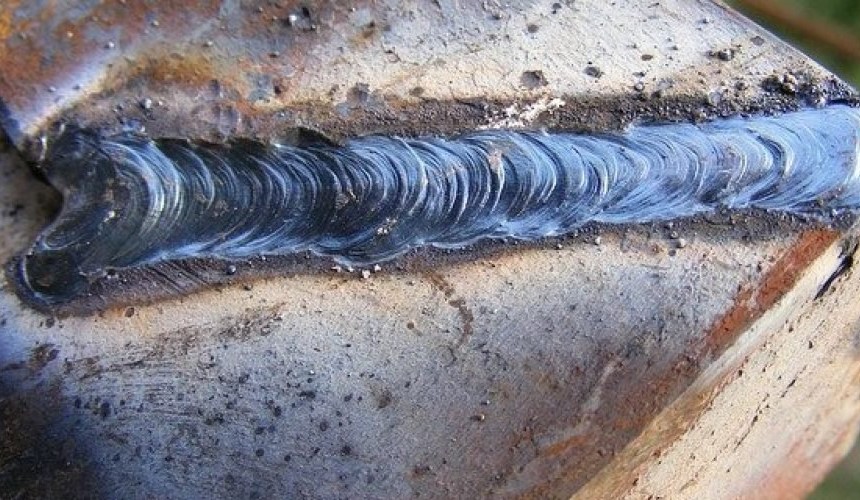Finest Practices for Preventing Weld Undercut: Mastering the Essentials
Finest Practices for Preventing Weld Undercut: Mastering the Essentials
Blog Article
A Comprehensive Guide to Identifying, Fighting, and Fixing Undercut Welding Troubles in Your Welding Tasks
In the realm of welding, running into undercut issues is a typical obstacle that can endanger the structural stability and general quality of your welding tasks. Keep tuned as we explore the necessary elements of determining, avoiding, and repairing undercut welding issues, supplying you with important insights and techniques to raise your welding skills to the following level.
Common Sources Of Undercut Welding
Undercut welding, an usual concern in welding processes, can be caused by various factors that need to be very carefully recognized and addressed to guarantee the honesty of the weld joint. One of the primary causes of undercut welding is too much warm input.
An additional typical reason of undercut welding is improper welding strategy. Poor manipulation of the welding lantern or gun, wrong angle or range between the work surface and the torch, or irregular travel rate can all add to the formation of undercut. Additionally, making use of the wrong welding consumables or electrode size for a particular joint setup can result in undercut problems. Determining these source and executing rehabilitative actions is essential in preventing and remedying undercut welding problems in welding projects.
Identifying Undercut in Welds

To identify undercut properly, proper lights and zoom devices are important to evaluate the weld joint completely. Making use of tools such as a welding scale or a magnifying glass can aid in discovering even the smallest undercut imperfections. In addition, running a finger or a fingernail along the weld joint can often disclose undercut, as the surface might really feel irregular or have a dip where the undercut exists.
Preventive Steps for Undercut
Having a deep understanding of the reasons of undercut in welds permits for the implementation of reliable preventative procedures to keep weld quality and integrity. One vital preventative step appertains weld joint preparation. Ensuring that the edges are clean, devoid of impurities, and properly beveled can substantially minimize the probability of undercut (Preventing weld undercut). Furthermore, choosing the ideal welding specifications, such as voltage, present, and travel rate, is crucial. These setups ought to be optimized to avoid extreme warmth input, which can cause damage formation.

Techniques for Repairing Undercut

To address undercut problems efficiently, welders can utilize specific techniques focused on correcting the from this source flaw and bring back the stability of the weld joint. One strategy is to readjust the welding criteria, such as the voltage, current, and take a trip rate, to guarantee appropriate warmth input and combination. Raising the welding present or lowering the traveling rate can assist fill out the undercut. Additionally, altering the welding method from a push to a drag or vice versa can also aid minimize undercut.
An additional strategy is to utilize a weaving activity while welding to make sure appropriate sidewall this hyperlink combination and fill in the undercut. By oscillating the welding arc back and forth within the weld joint, the welder can deposit more filler material right into the undercut locations, properly eliminating the defect.
Moreover, grinding out the undercut and rewelding the joint can be a viable solution for a lot more serious undercut problems - Preventing weld undercut. This process includes getting rid of the undercut area, preparing the base steel, and after that rewelding the joint with appropriate welding specifications and strategies to stop undercut from reoccurring

Professional Tips for Avoiding Undercut
Utilizing correct welding methods and preserving control over essential welding parameters are important strategies for welders intending to avoid undercut in their weld joints. One expert tip for staying clear of undercut is to guarantee proper joint prep work. This includes cleansing the base metal extensively to remove any impurities that might lead to damage formation. Furthermore, choosing the proper welding procedure and filler steel for the specific application can aid protect against undercut. Welders should also pay close focus to the welding current and voltage settings, ensuring they are within the suggested array to avoid overheating and prospective undercut. Keeping a consistent traveling speed throughout the welding process is an additional crucial tip to stop undercut. By relocating at a steady pace, welders can ensure appropriate blend and decrease the probability of undercut formation. Checking the weld bead after conclusion can assist determine any type of indications of undercut very early on, enabling for prompt restorative action to be taken.
Verdict
In final thought, recognizing, preventing, and taking care of undercut welding problems in your welding projects is critical for making certain solid and long lasting welds. Preventing weld undercut. By recognizing the usual reasons for undercut, having the browse this site ability to recognize it in welds, executing preventative measures, and making use of correct techniques for dealing with undercut, you can avoid prospective issues and produce top quality welds. Adhering to professional suggestions for avoiding undercut can assist you enhance your welding skills and produce much better cause your projects
Undercut welding, a typical problem in welding processes, can be caused by different variables that need to be very carefully determined and addressed to guarantee the stability of the weld joint. Furthermore, running a finger or a fingernail along the weld joint can often disclose undercut, as the surface may feel uneven or have a dip where the undercut exists.
Making use of correct welding strategies and keeping control over essential welding parameters are critical strategies for welders aiming to prevent undercut in their weld joints.In final thought, identifying, preventing, and taking care of undercut welding troubles in your welding jobs is critical for ensuring strong and long lasting welds. By understanding the usual reasons of undercut, being able to recognize it in welds, applying preventive procedures, and utilizing correct strategies for fixing undercut, you can avoid potential issues and develop high-grade welds.
Report this page